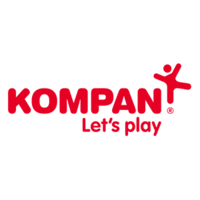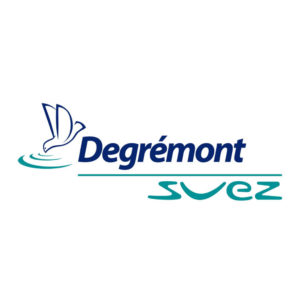Workspace
Let's talk about your project
We spend on average a little more than 20% of our time per week at our workplace. The workspace then becomes an element that impacts the quality of life of workers.
It is also associated with one of the 8 dimensions of the quality of life at work: “The quality of the physical environment” (according to the National Interprofessional Agreement of June 19, 2013, on the quality of life at work).
Most often at the heart of interactions, relationships, and missions, its organization must then be seen as a balanced space, between well-being and productivity.
However, according to a study by Actineo (2019), only 22% of employees are satisfied with their workplace.
Workspaces: what are they?
Defined by the type of activity carried out there, the workspace represents an important part of the worker’s life because of its central and omnipresent role.
Thus, whether it is a workspace fitted out at home for teleworking, a coworking space, traditional offices, or even an open space, the workspace fully contributes to the quality of life at work.
According to a study conducted by Actineo (2019), French working people consider that workspace has a strong influence on the quality of life at work. For 50% of them, the workspace has a “very significant” impact on their health, and 48%, on their well-being.
From its conception (creation, organization, remodeling, etc.), it is important to take into account the prevention of occupational risks in a dynamic of anticipation. Many parameters must then be taken into account, in particular the ergonomics of the workstation.
The ergonomics of the workstation
Ergonomics is defined by the International Ergonomics Association as “the scientific discipline concerned with the fundamental understanding of interactions between humans and other elements of a system, and the profession that applies theoretical principles, data and methods in order to optimize human well-being and overall performance. »
Created to meet the functional needs of workers, ergonomic workspaces facilitate the achievement of a balance between well-being and performance. Different factors are then taken into account, including cognitive, physical, environmental, and organizational factors.
As an example, the 7 parameters listed below are relevant to consider in a workspace organization approach:
- Access and circulation
- Communications
- Time constraints
- Physical and chemical hazards
- Information
- Handling and efforts
- Sizing and postures.
Other specific dimensions can also be taken into account on a case-by-case basis for an approach perfectly adapted to the challenges.
The workspace created like this then promotes productivity by positively influencing motivation and performance but also reduces the risks of work accidents and occupational diseases.
The open space
The world of work is constantly changing, workspaces are no exception, and new ways of organizing the space coexist. After working in a closed office, working in an open space remains one of the most frequent options today.
It is defined as a collective workspace in which the different workstations are not separated by partitions, the open space is today a method known and shared by many companies.
According to a study carried out by Actineo (2019), 34% of employees in France work in open spaces, 12% of which have more than 10 people.
This method often represents an attractive economic model for companies but is also a means of free communication that can facilitate teamwork through responsiveness.
However, it is important to take into account and prevent the risks associated with such a community space, such as possible noise pollution that could impact the concentration of certain workers.
Other types of workspaces
Other complementary trends are emerging such as the flex-office, a workspace where no specific desk is assigned to an employee. Each employee chooses its desk which can be different depending on the day, its missions, or its wishes. In addition to the open space, the following services can then be offered: soundproof rooms to make calls, collective rooms for unplanned meetings, collaborative spaces to relax, etc. In flex office, employees are also invited to work from home or in outdoor coworking spaces.
When the flex office is well organized (adapted communication, support for change, employees and managers trained, etc.) it optimizes teams’ performance by making them more flexible while being a driver for a better employee experience that promotes meetings (getting to know new colleagues).
We can also mention the smart office, an innovative and intelligent workspace that allows individuals, thanks to technology, to work more efficiently, quickly, and more intelligently.
Or the activity-based-office which invites employees to freely choose when and how they work according to their own needs and those of the company. A working environment that employees can design themselves, with the help of their own teams.
It is important to note that none of these trends represent a universal solution to well-being and performance. Each situation is unique and only an accurate analysis of the needs, issues and context will enable to implement the most suitable solution.
What service does Ekilibre offer in terms of workspace?
Our objective is to provide the best support for each company in achieving its goals, from the implementation of a global approach to more specific reinforcement actions.
Each of our supports is guided by a rigorous methodological framework and regularly updated scientific knowledge. We are also in line with the recommendations of national and international reference organizations.
As an example, the main services we can offer you are listed below.
- Advice to support the change of workspace
- Support in the organization and/or reorganization of the workspace
- Implementation of experience feedbacks
- Setting up a workspace audit
- Integrating measures to improve the workspace in the DUERP (=single document for the evaluation of occupational risks)
- Setting up interactive workshops to find plans of action in collective intelligence
- Ergonomic study of the workspace and courses of action
- Upstream and downstream impact assessment of a change in the organization of the workspace
- Awareness and tailor-made training for stakeholders:
- Ergonomics of the workstation
- Optimizing work in open spaces
- Other specifications related to the topic
- Specific coaching on this topic
- Provision of a toll-free number
Each situation deserves to be understood in its singularity. Therefore, we invite you to contact us so that we can better understand your needs and co-develop with you the most suitable project.
They have trusted us, why wouldn't you?

































































